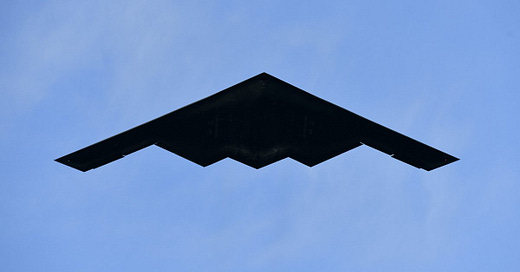Pentagon Releases Flight Map of B-2 Bomber Mission Over Middle East; U.S. and Iran Continue Communication Amid Rising Tensions
Flight path reveals routes over Israel, Jordan, and Iraq as diplomatic channels remain open between Washington and Tehran.
In a rare disclosure, the Pentagon has released a detailed map outlining the flight path of B-2 stealth bombers during a recent mission targeting Iranian nuclear facilities. According to the Pentagon, the bombers traversed a route over the Mediterranean Sea, proceeding over Israeli, Jordanian, and Iraqi airspace before striking three Iranian nuclear sites.
While it remains unclear when the respective countries were formally notified of the bombers’ passage, Israeli officials have stated that the strikes were conducted in close coordination with their military forces. The U.S. Department of Defense confirmed that Israeli jets were not involved in the operation.
Pentagon spokespersons emphasized the significant impact of the strikes, describing the damage as “extremely severe” and aimed at crippling Iran’s nuclear capabilities. The release of the flight path map coincided with Pentagon officials providing a detailed briefing about the scope and execution of the mission.
In a separate development, diplomatic channels between Washington and Tehran remain active despite heightened tensions. Hours after Iran’s top diplomat publicly acknowledged ongoing communications, U.S. Defense Secretary Pete Hegseth affirmed that multiple channels of dialogue remain open.
“I can only confirm that there are both public and private messages being directly delivered to the Iranians in multiple channels, giving them every opportunity to come to the table,” Secretary Hegseth stated during a press conference.
The continued exchange of messages signals a cautious diplomatic engagement amid a precarious security environment in the region. Analysts suggest that while military actions have escalated, efforts persist to prevent a full-scale conflict through backchannel diplomacy.
This evolving situation underscores the complex interplay of military strategy and diplomatic negotiation as the United States seeks to address concerns over Iran’s nuclear program while maintaining regional stability.





